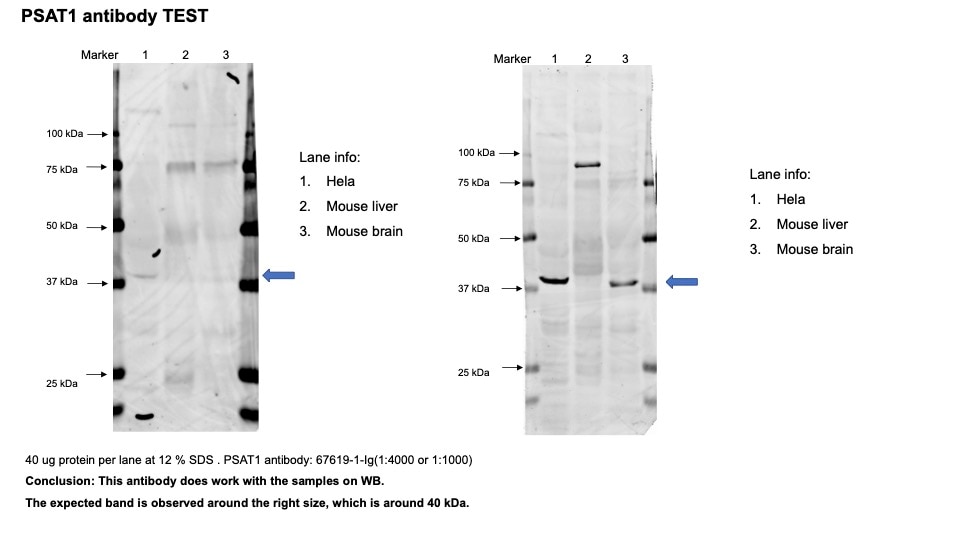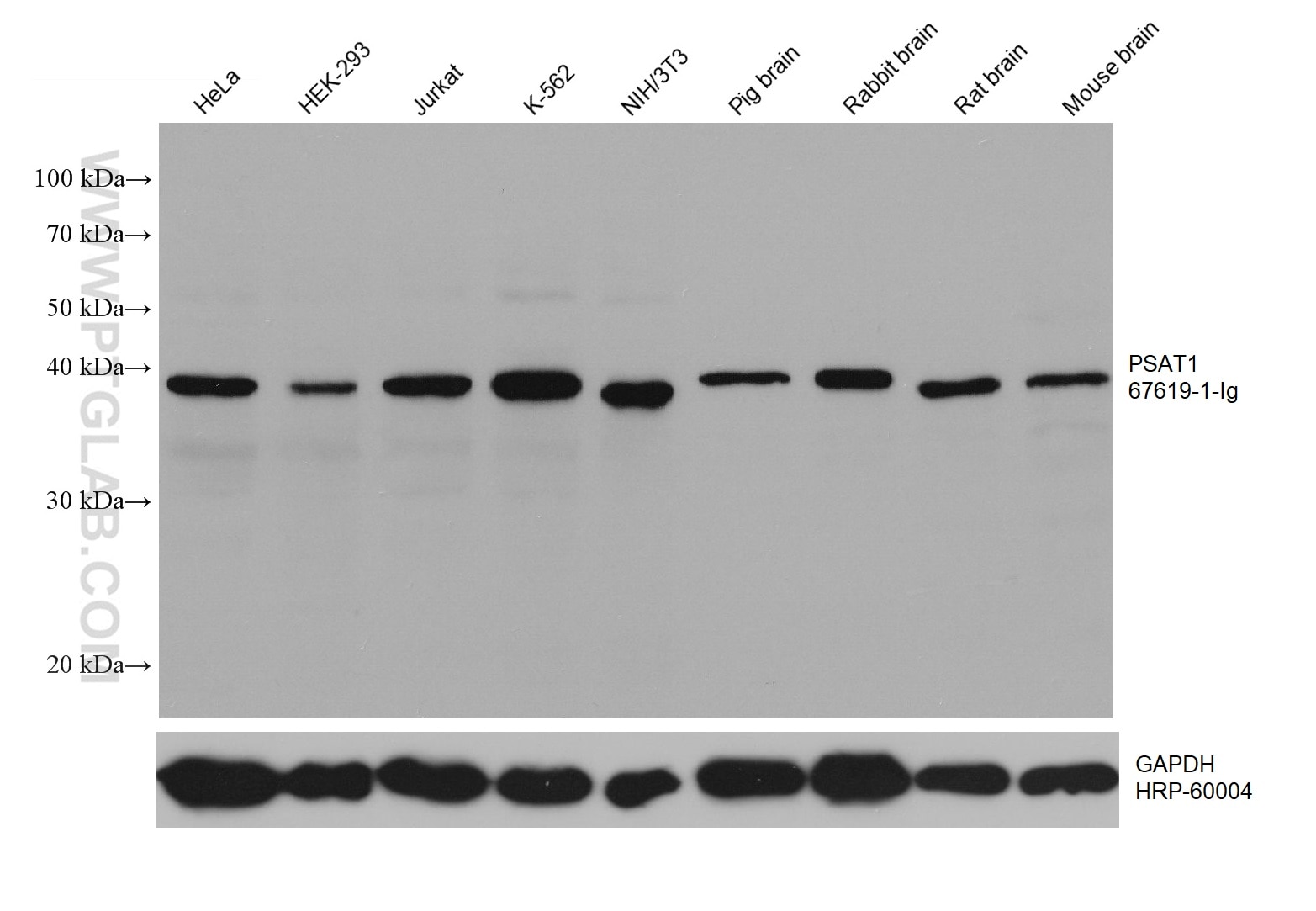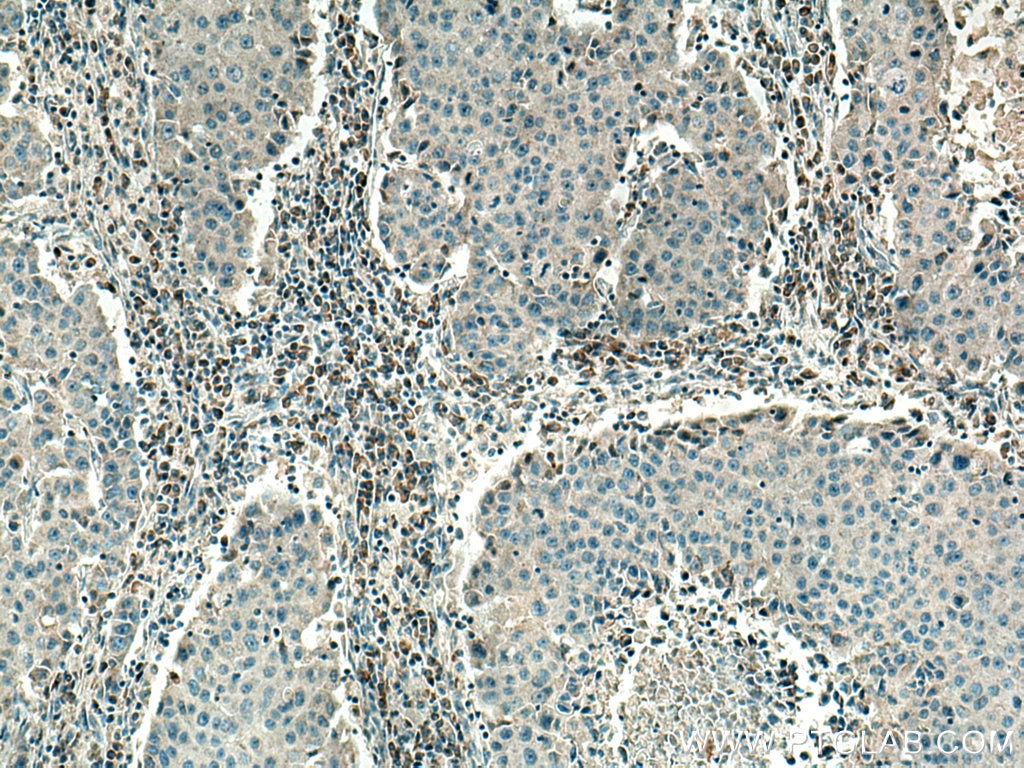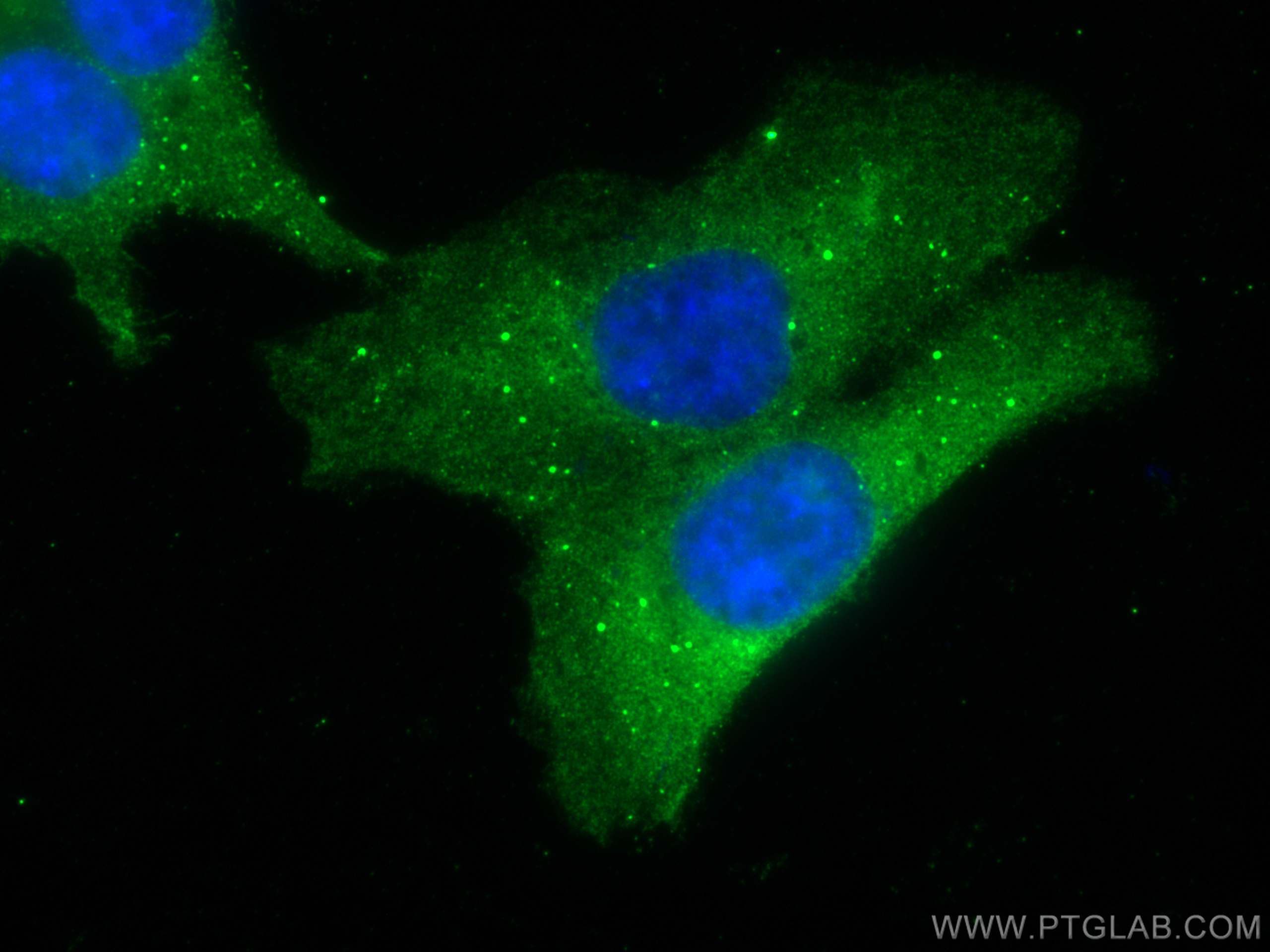Anticorps Monoclonal anti-PSAT1
PSAT1 Monoclonal Antibody for WB, IHC, IF/ICC, ELISA
Hôte / Isotype
Mouse / IgG1
Réactivité testée
Humain, porc, rat
Applications
WB, IHC, IF/ICC, ELISA
Conjugaison
Non conjugué
CloneNo.
1B2C9
N° de cat : 67619-1-Ig
Synonymes
Galerie de données de validation
Applications testées
| Résultats positifs en WB | cellules HeLa, cellules HEK-293, cellules Jurkat, cellules K-562, cellules NIH/3T3, tissu cérébral de lapin, tissu cérébral de porc, tissu cérébral de rat, tissu cérébral de souris |
| Résultats positifs en IHC | tissu de cancer du sein humain, il est suggéré de démasquer l'antigène avec un tampon de TE buffer pH 9.0; (*) À défaut, 'le démasquage de l'antigène peut être 'effectué avec un tampon citrate pH 6,0. |
| Résultats positifs en IF/ICC | cellules HCT 116, |
Dilution recommandée
| Application | Dilution |
|---|---|
| Western Blot (WB) | WB : 1:5000-1:50000 |
| Immunohistochimie (IHC) | IHC : 1:250-1:1000 |
| Immunofluorescence (IF)/ICC | IF/ICC : 1:400-1:1600 |
| It is recommended that this reagent should be titrated in each testing system to obtain optimal results. | |
| Sample-dependent, check data in validation data gallery | |
Applications publiées
| KD/KO | See 1 publications below |
| WB | See 3 publications below |
| IHC | See 2 publications below |
Informations sur le produit
67619-1-Ig cible PSAT1 dans les applications de WB, IHC, IF/ICC, ELISA et montre une réactivité avec des échantillons Humain, porc, rat
| Réactivité | Humain, porc, rat |
| Réactivité citée | Humain |
| Hôte / Isotype | Mouse / IgG1 |
| Clonalité | Monoclonal |
| Type | Anticorps |
| Immunogène | PSAT1 Protéine recombinante Ag14076 |
| Nom complet | phosphoserine aminotransferase 1 |
| Masse moléculaire calculée | 370 aa, 40 kDa |
| Poids moléculaire observé | 37-40 kDa |
| Numéro d’acquisition GenBank | BC001618 |
| Symbole du gène | PSAT1 |
| Identification du gène (NCBI) | 29968 |
| Conjugaison | Non conjugué |
| Forme | Liquide |
| Méthode de purification | Purification par protéine G |
| Tampon de stockage | PBS with 0.02% sodium azide and 50% glycerol |
| Conditions de stockage | Stocker à -20°C. Stable pendant un an après l'expédition. L'aliquotage n'est pas nécessaire pour le stockage à -20oC Les 20ul contiennent 0,1% de BSA. |
Informations générales
PSAT1, also named as PSA and PSAT, belongs to the class-V pyridoxal-phosphate-dependent aminotransferase family and SerC subfamily. It catalyzes the reversible conversion of 3-phosphohydroxypyruvate to phosphoserine and of 3-hydroxy-2-oxo-4-phosphonooxybutanoate to phosphohydroxythreonine. PSAT1 represents a new interesting target for CRC therapy. (PMID:18221502) It may be implicated in altered serine metabolism and schizophrenia spectrum conditions. (PMID:20955740 )
Protocole
| Product Specific Protocols | |
|---|---|
| WB protocol for PSAT1 antibody 67619-1-Ig | Download protocol |
| IHC protocol for PSAT1 antibody 67619-1-Ig | Download protocol |
| IF protocol for PSAT1 antibody 67619-1-Ig | Download protocol |
| Standard Protocols | |
|---|---|
| Click here to view our Standard Protocols |
Publications
| Species | Application | Title |
|---|---|---|
Thorac Cancer Exosomal ERBB2IP contributes to tumor growth via elevating PSAT1 expression in non-small cell lung carcinoma | ||
Cancer Biother Radiopharm Prognostic Signature in Osteosarcoma Based on Amino Acid Metabolism-Associated Genes | ||
Exp Mol Med The m6A writer RBM15 drives the growth of triple-negative breast cancer cells through the stimulation of serine and glycine metabolism | ||
Cancer Metab Serine starvation suppresses the progression of esophageal cancer by regulating the synthesis of purine nucleotides and NADPH
|
Avis
The reviews below have been submitted by verified Proteintech customers who received an incentive for providing their feedback.
FH Hua (Verified Customer) (01-17-2023) | Good antibody, however the actual results are not as good as that showing on the website. I have to use much lower dilution as 1:1000.
 |




